Digital Humanities Crash-Course
April 19 — 26
Course slides & materials
Warning
This presentation is Non-Linear
Use SPACE to go forward, SHIFT+SPACE to go back
Plan for today
- Networks Intro
- What can we formalise (and study) as a network/graph
- Human Networks
- Humanities Networks
- Practice with Gephi & Ezlinavis: HOWTO
- import and work with existing network datasets
- build your own networks
Same plan in informal Russian :)
- Что за сети? Что за анализ?
- сети (графы) в реальном мире
- Те самые «шесть рукопожатий»: сети из людей
- С кем дружил Фрэнсис Бэкон и кому платили короли: сети в гуманитарных науках
- Пушкин на посылках и «коммунистическая» пьеса: что можно увидеть в вымышленных сетях?
- Практика в Gephi и Ezlinavis
networks 101
A network (a graph)

What can be represented as a network?

Practically anything

Bridges
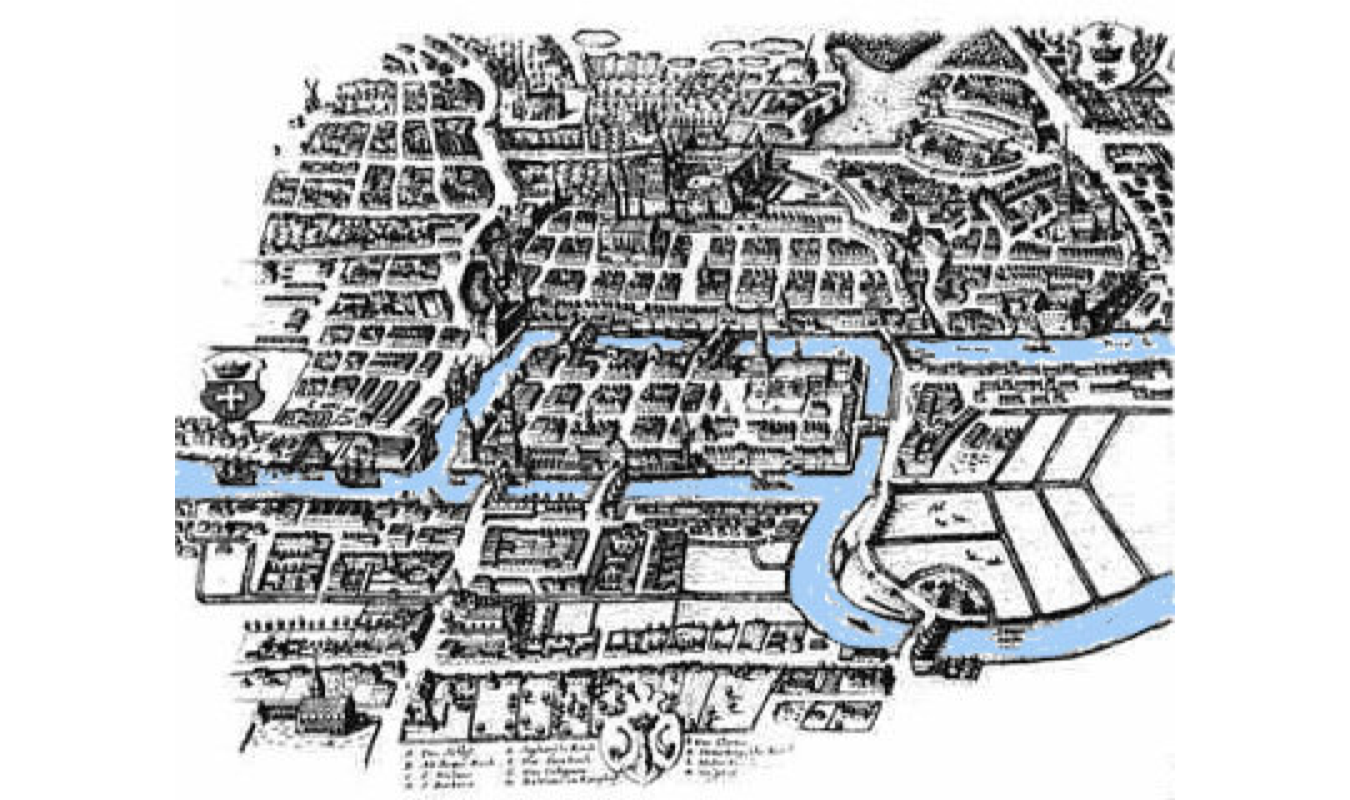
Seven Bridges of Königsberg by Euler
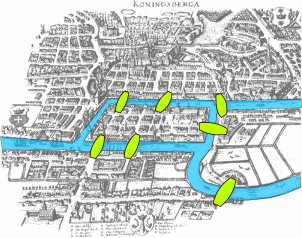
This is how network theory came about
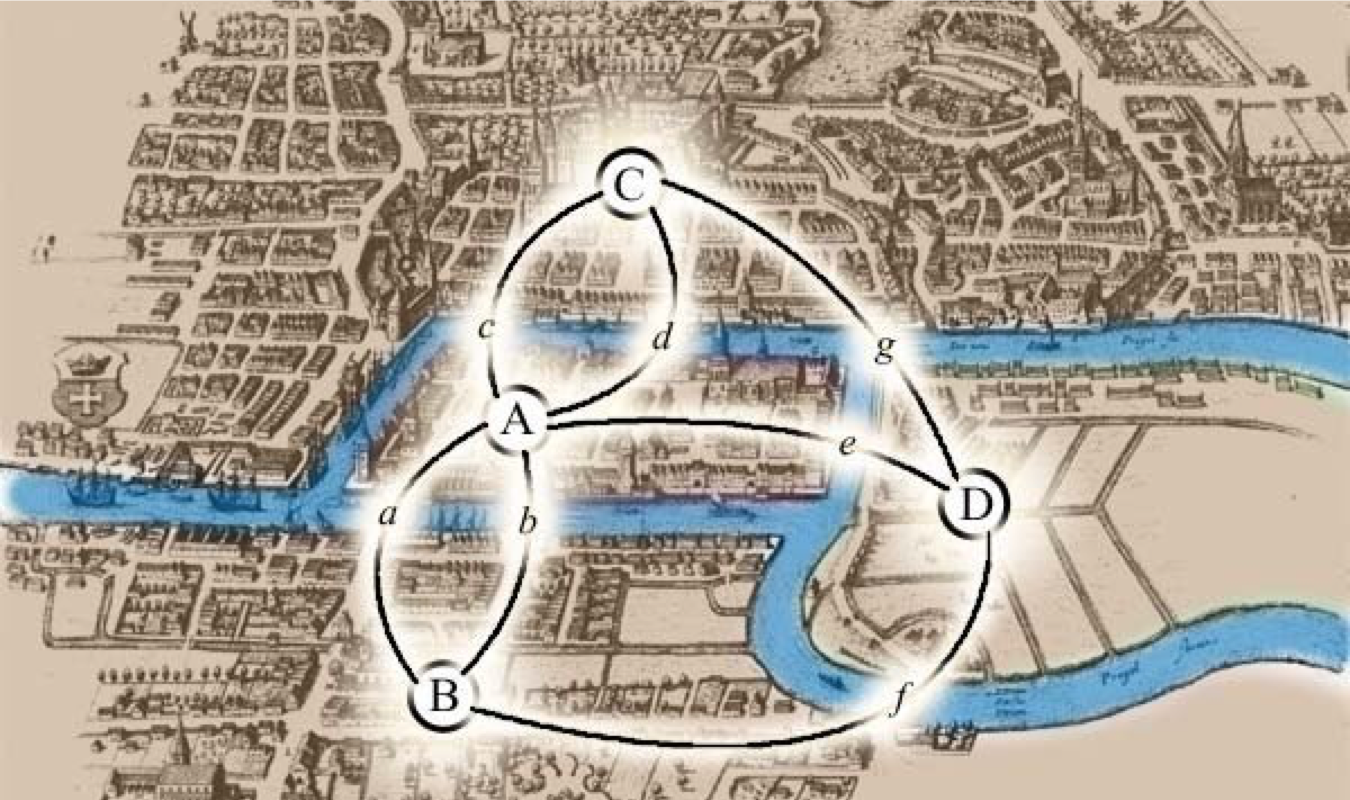
Transportation networks

Directed graph
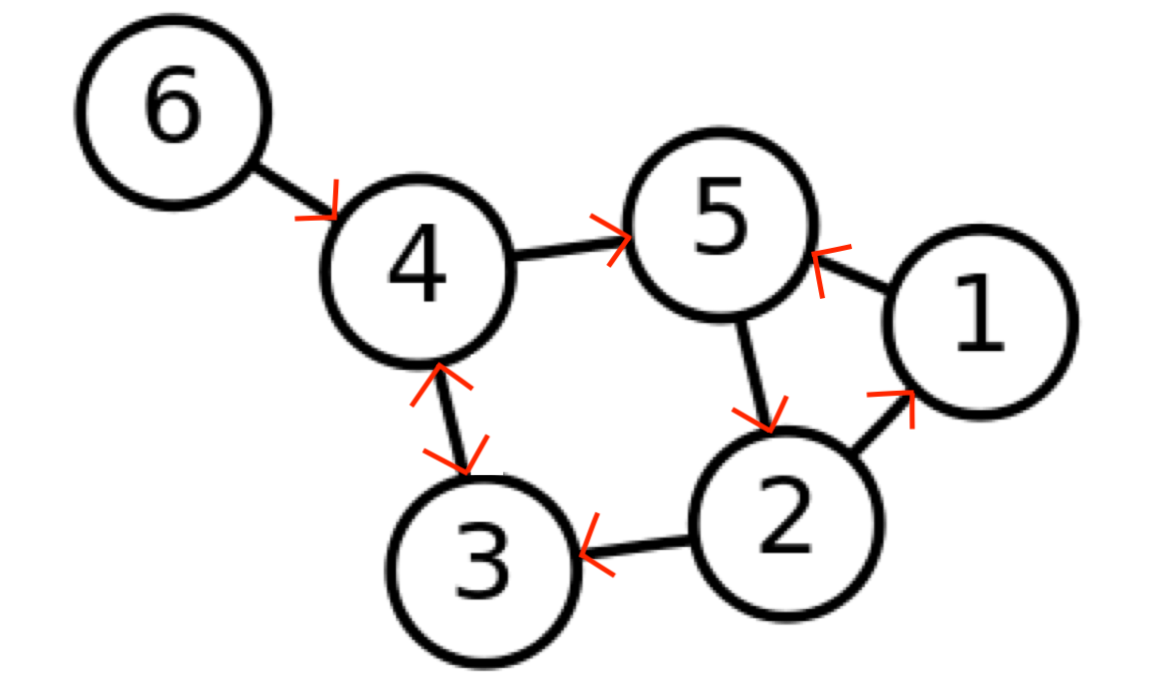
Another transportation network
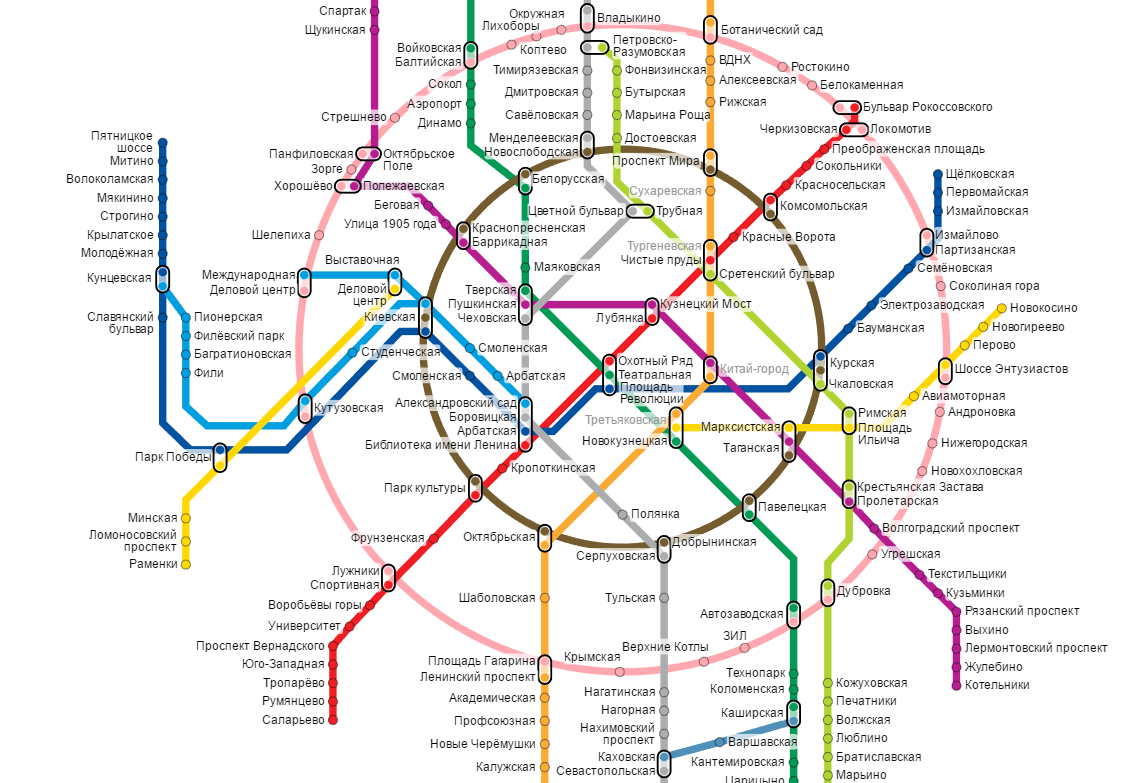
Weighted graph
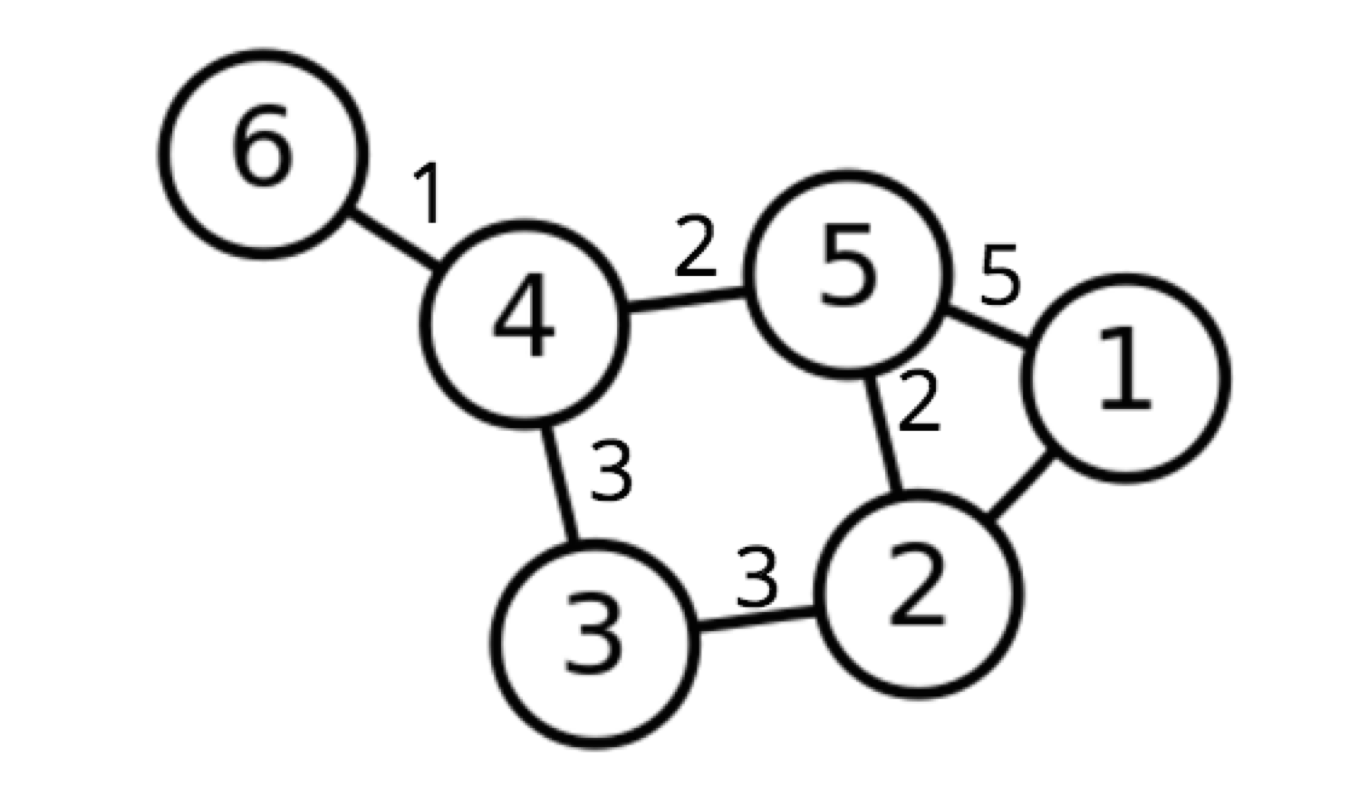
INTERNET

Wikipedia

And by the way
data like this is easily extractible from Wiki using DBpedia or Wikidata (+SPARQL)

...and of course, social networks!

Lut's try live
Lut's try live
But actually, this is real rocket social science!
Social Network Analysis
Origins in 1930-es: Kurt Levin, Jacob Moreno

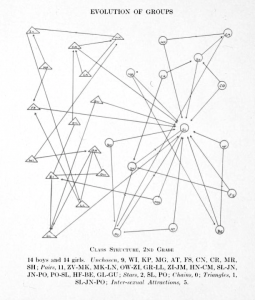
Social Network Analysis
Manchester Anthropology School (Max Gluckman and followers) in the 50-es
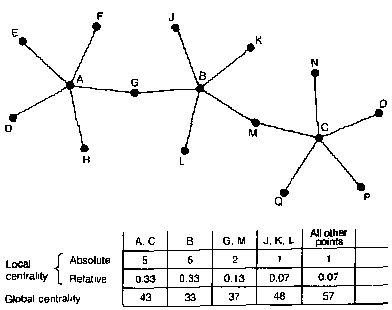
Social Network Analysis
'Harvard Breakthrough' in the 60-es (Harrison White and followers)
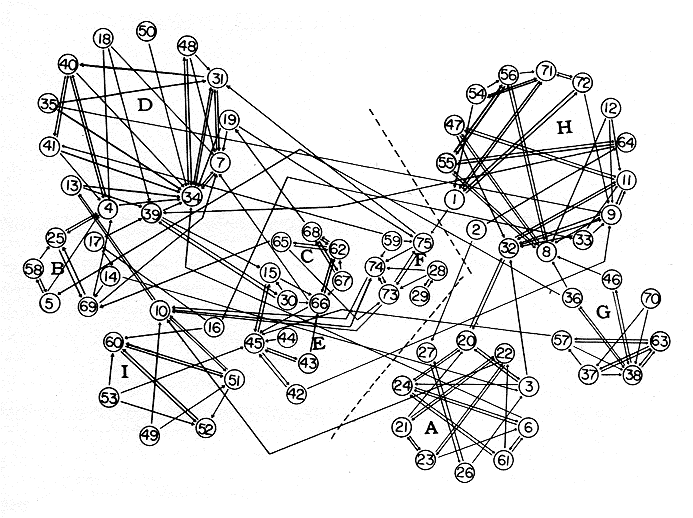
The (Infamous) Six Degrees of Separation
(Теория шести рукопожатий)

Small World Experiment
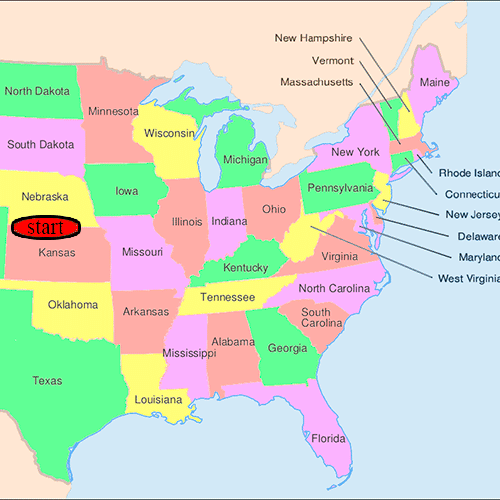
Small World Experiment
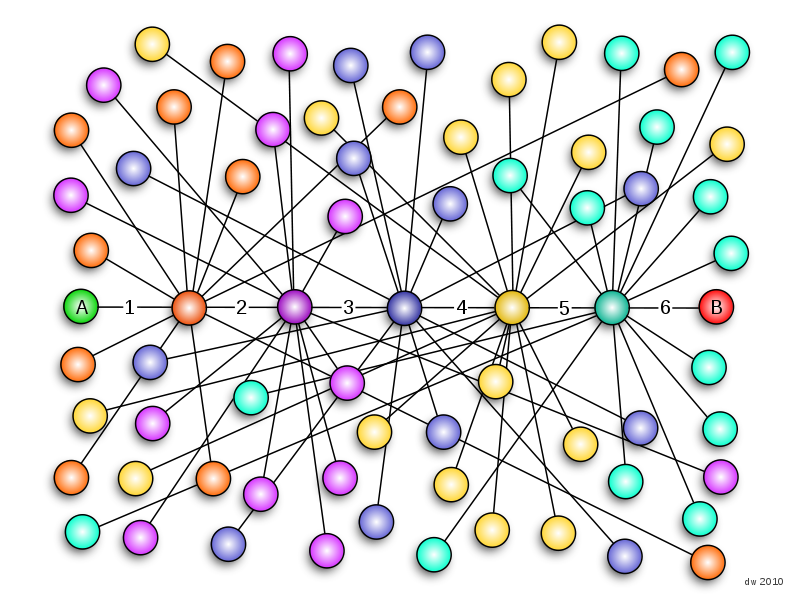
Social Network Analysis
New Wave with new data

Networks: now in the humanities!
Who knew whom in Britain 500 years from now
- Проект Six Degrees of Francis Bacon (шесть рукопожатий Фрэнсиса Бэкона)
- Более 13.000 человек, более 200.000 связей
- Извлечено из Oxford Dictionary of National Biography
- sixdegreesoffrancisbacon.com
People of Medieval Scotland

RusDraCor
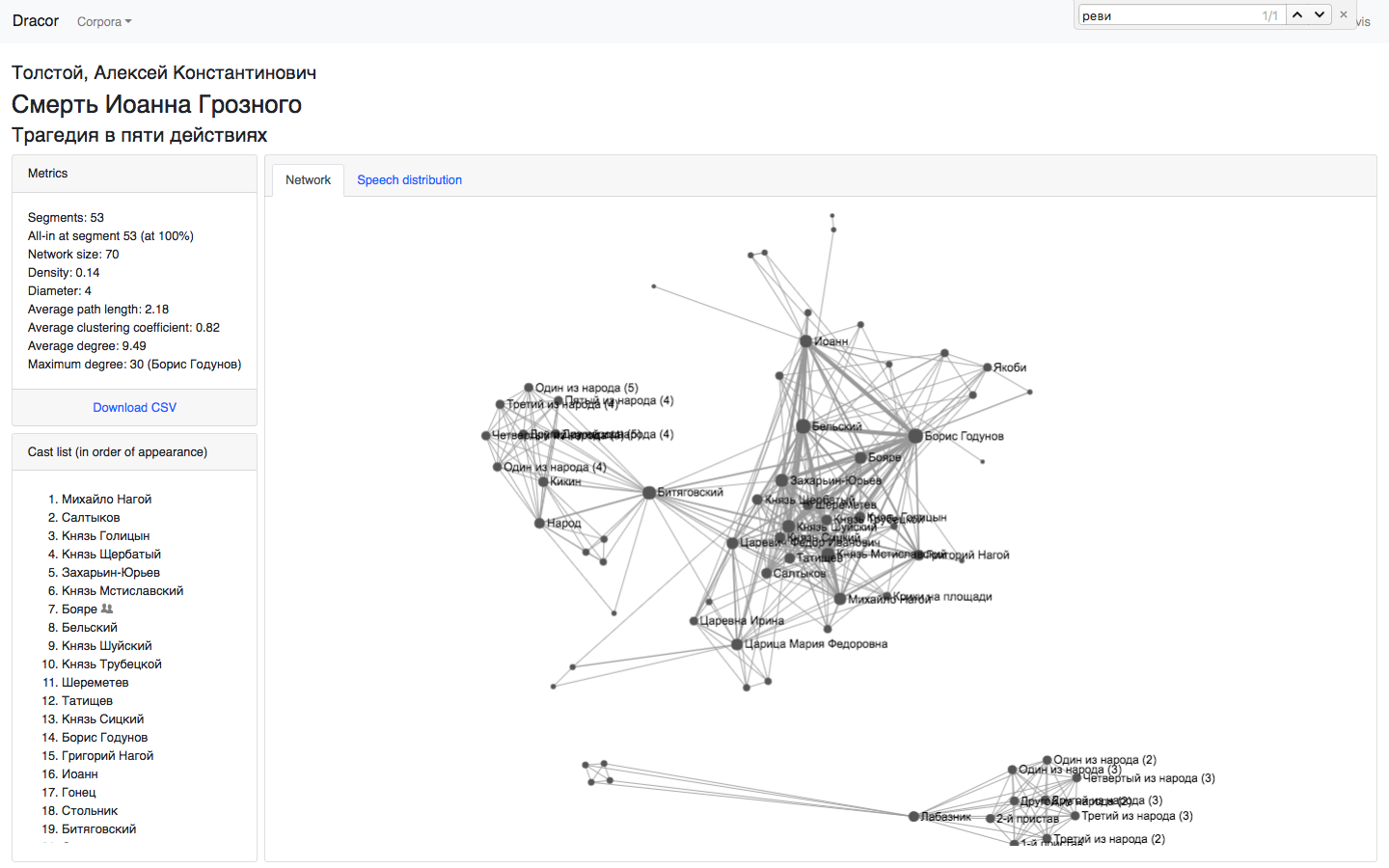
(Shiny RusDraCor)

It’s pretty (and fashionable)
Ondrej Tichy, Charles University
But actually, networks give you a combination of visual and formal (mathematical) analysis
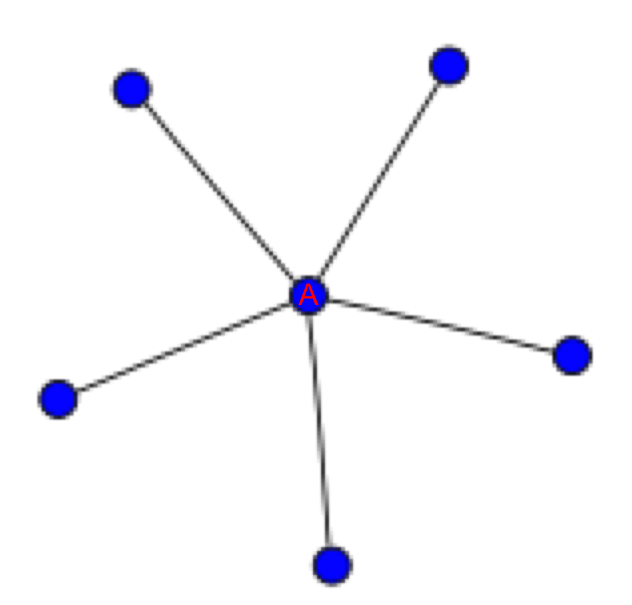
Centrality

Centrality of A = 5
What about this one
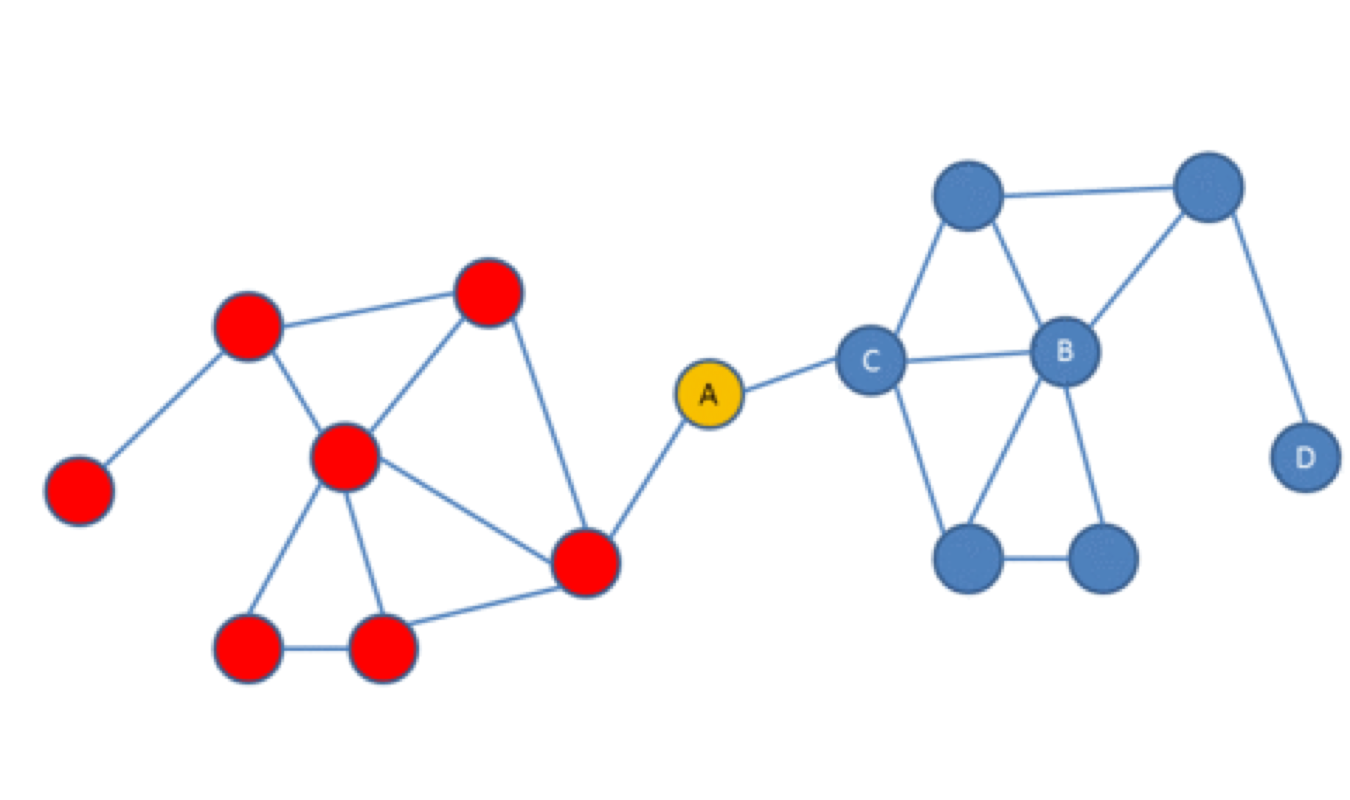
This is called betweenness centrality

So, networks help us
- Measure the 'importance' of a separate node (based on centrality measures)
- Analyse paths in a networks (e.g. information flow)
- also, communities extraction!
Commmunity detection: Karate Club
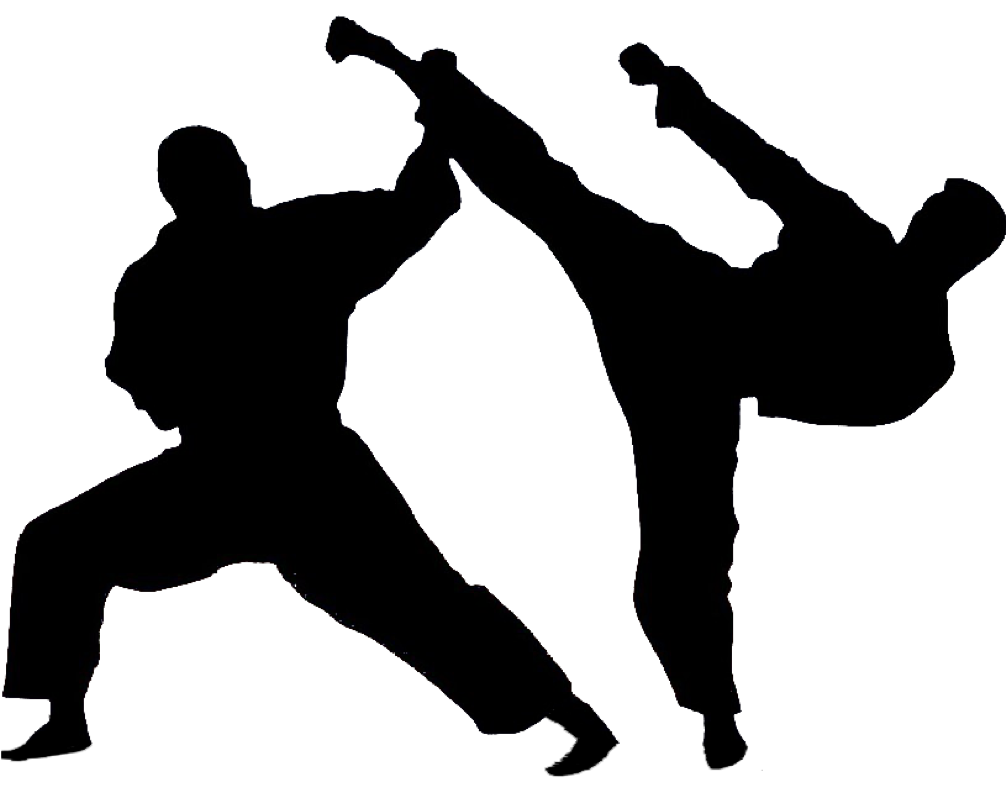
Commmunity detection: Karate Club
Commmunity detection: Karate Club
Commmunity detection: Karate Club
The process leading to fission is viewed as an unequal flow of sentiments and information across the ties in a social network. This flow is unequal because it is uniquely constrained by the contextual range and sensitivity of each relationship in the network. The subsequent differential sharing of sentiments leads to the formation of subgroups with more internal stability than the group as a whole, and results in fission
Zachary's matrix

Zachary's network visualization

Karate Club: my try in Gephi

Karate Club Club
Networks in Fiction
...not limited to literature
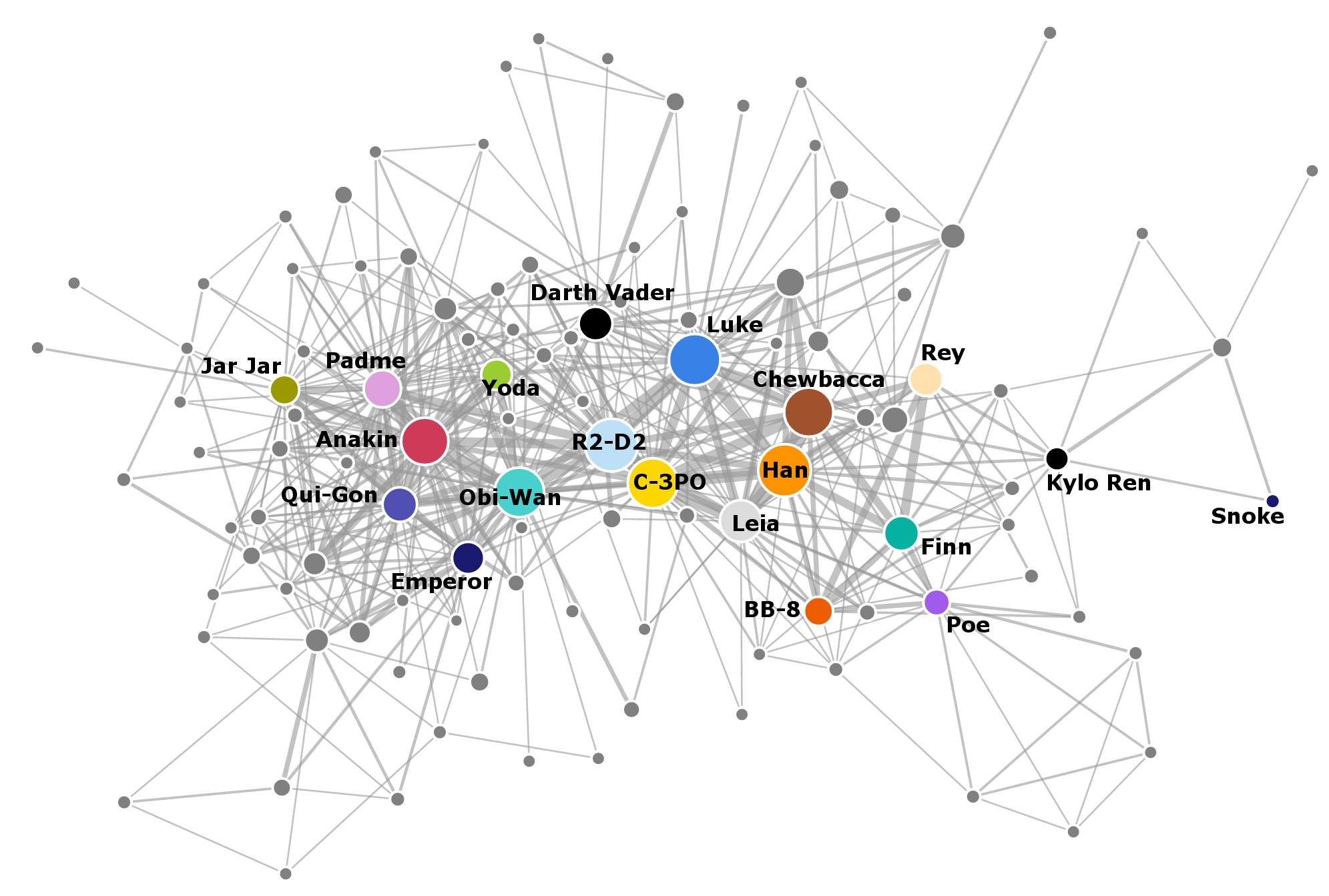
One of the first computable literary networks
Donald Knuth. Stanford GraphBase (1994)
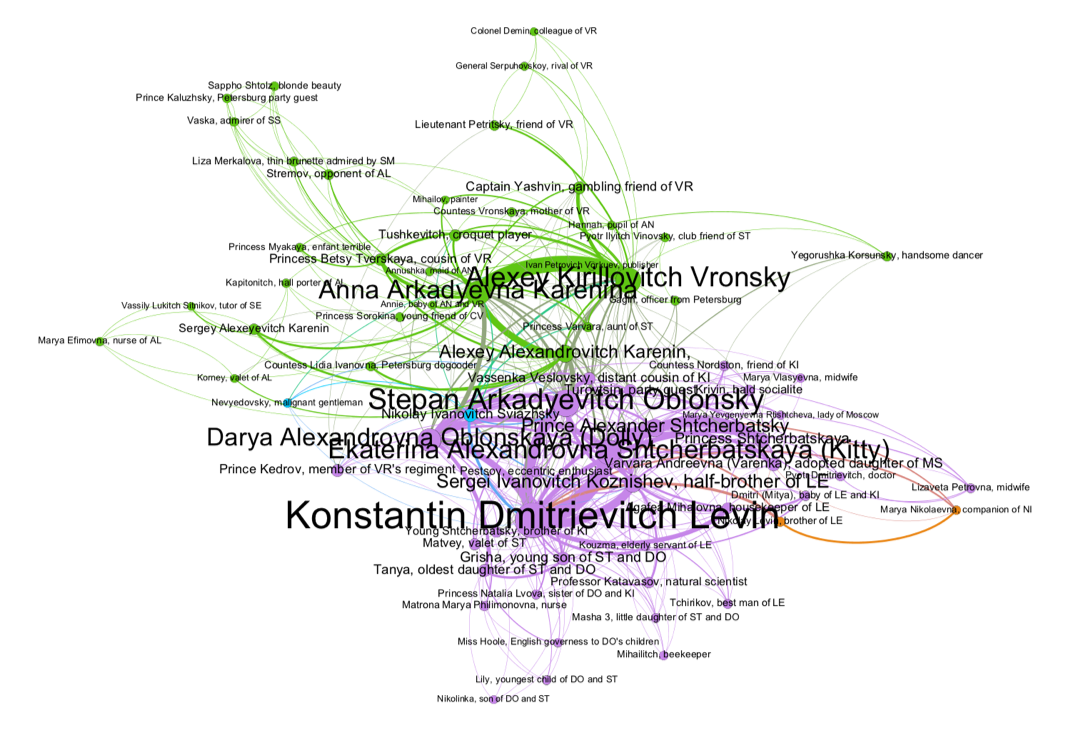
Simple Stories
Schweizer T., Schnegg M. Die soziale Struktur der. „Simple Storys“: Eine Netzwerkanalyse. (1998)

The Marvel Universe
Rotates Around Captain America!
The Marvel Universe
The Marvel Universe
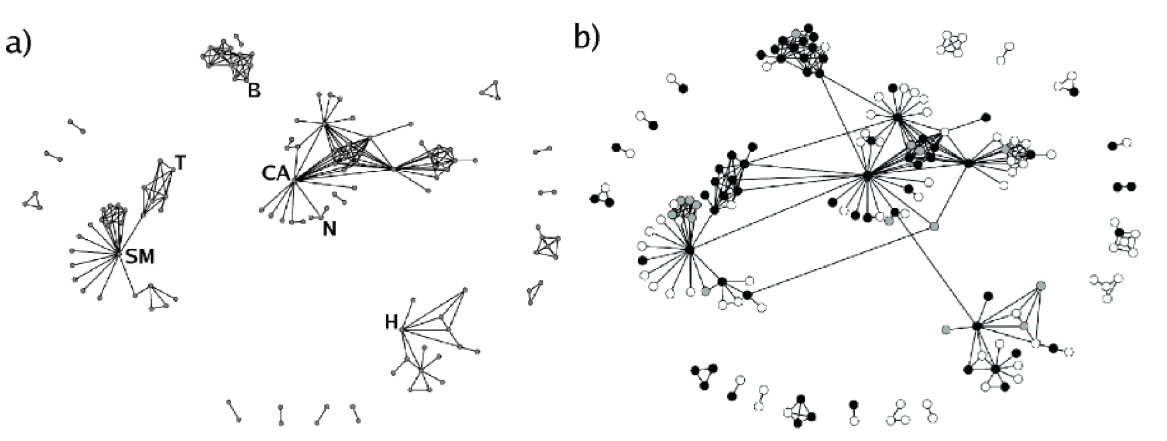
Alice in Wonderland

..and many others followed
- James Stiller, Daniel Nettle, and Robin I. M. Dunbar (2003) The Small World of Shakespeare’s Plays.Human Nature 14(4):397---408.
- “Weak Links and Scene Cliques Within the Small World of Shakespeare,” Journal of Cultural and Evolutionary Psychology 3, no. 1 (2005)
- Elson, D. K., Dames, N. and McKeown, K. (2010), Extracting Social Networks from Literary Fiction, Proceedings of ACL 2010, Uppsala, Sweden.
- J. Rydberg-Cox. Social Networks and the Language of Greek Tragedy. Journal of the Chicago Colloquium on Digital Humanities and Computer Science, 1(3):11, 2011.
- Agarwal A., Corvalan A., Jensen J., Rambow O. (2012), Social network analysis of Alice in Wonderland. Proceedings of the NAACL HLT 2012 Workshop on Computational Linguistics for Literature, pages 88–96, Montreal, Canada.
Reinvention of Literary Networks by Moretti
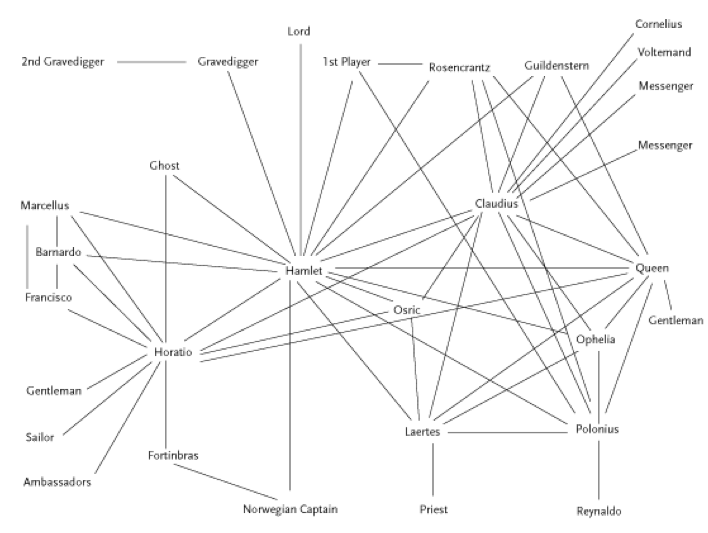
Scaling Up
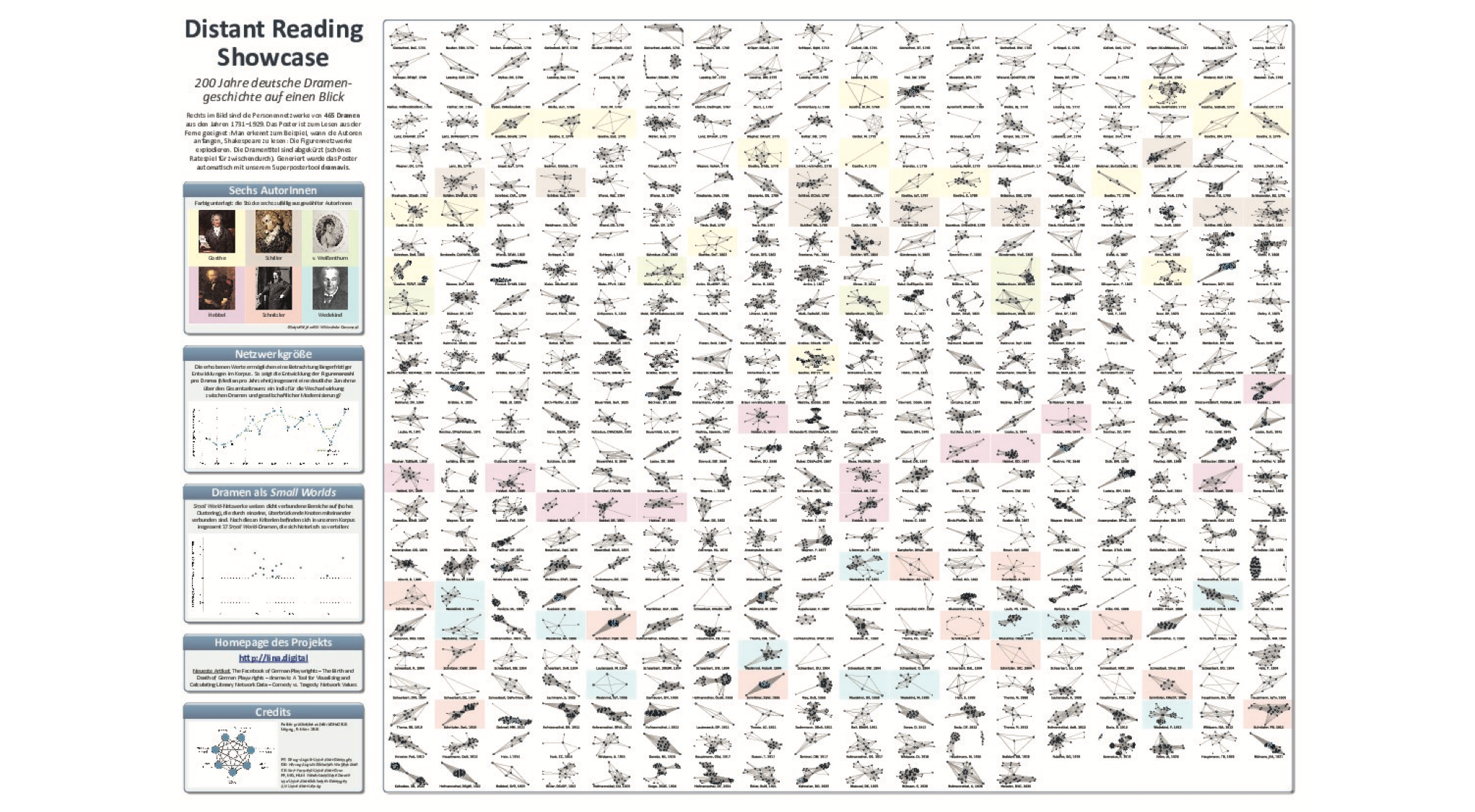
And now on Russian data
Classicism vs Romanticism in Russian Corpus
(rus.dracor.org)

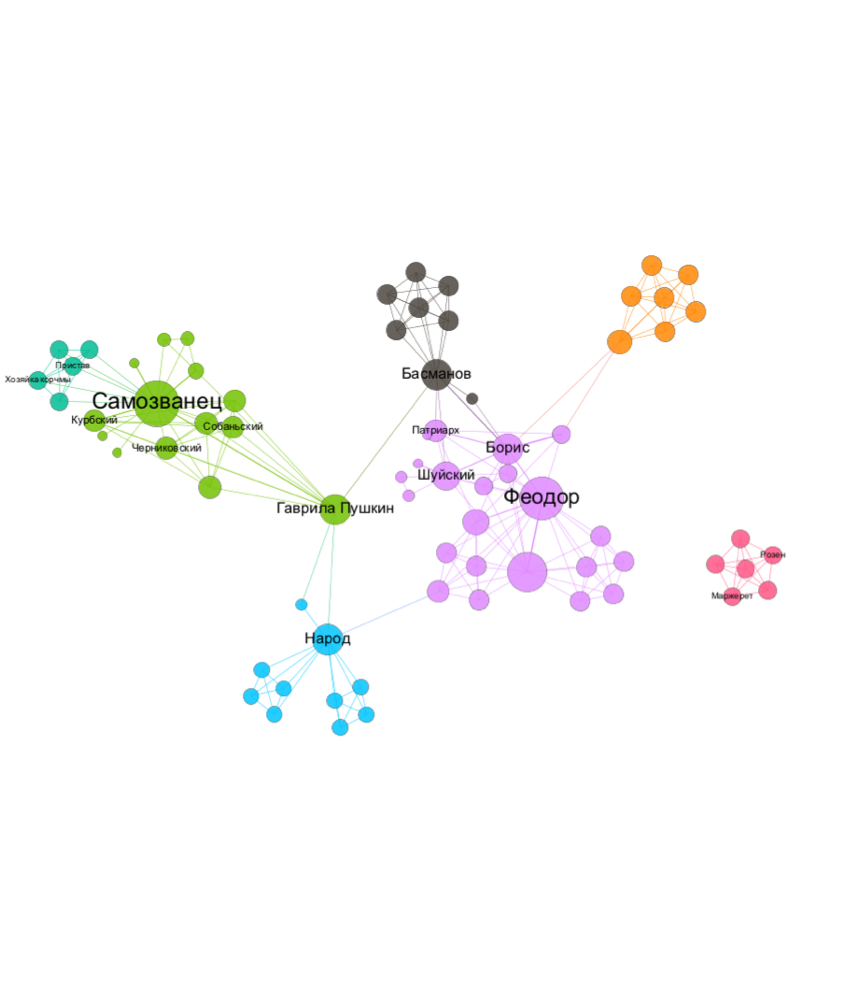
Gavrila Pushkin — is he important?

Gavrila the messenger
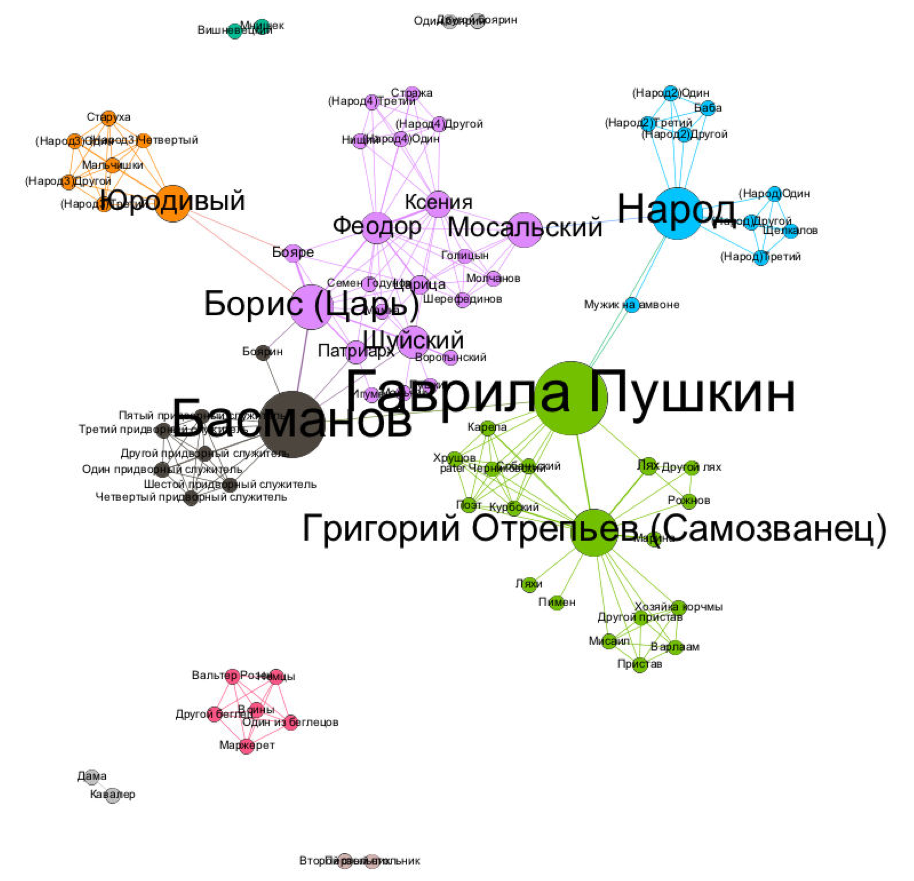
Bityagovsky (double agent)
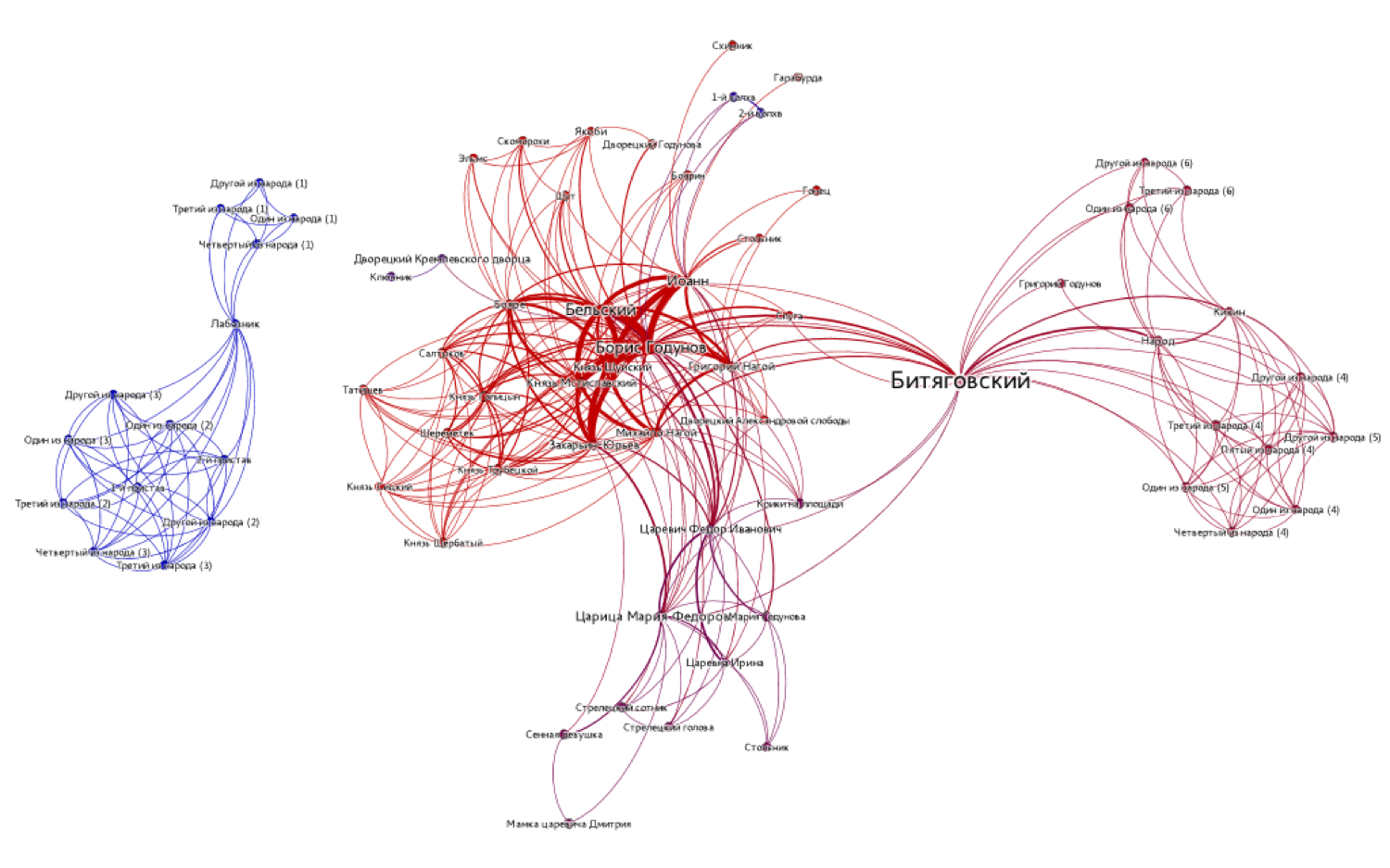
Bitkov (spy on Pushkin)
